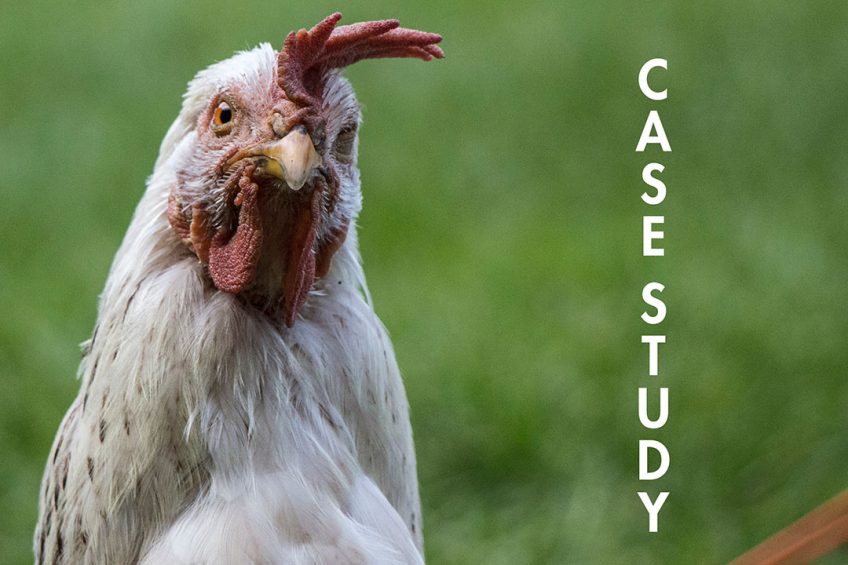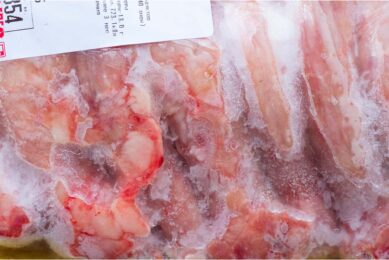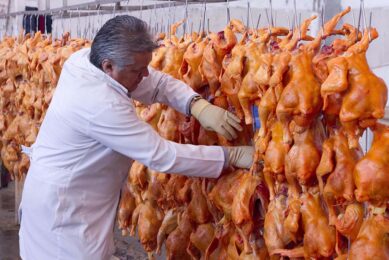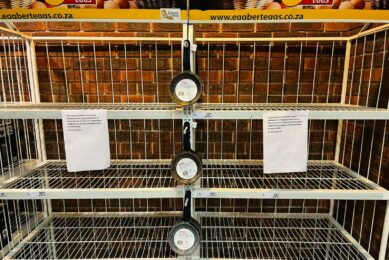Case study: Stable outlook for Argentina’s poultry sector

2020 chicken meat production and consumption in Argentina is forecast to remain steady with a slight increase in exports to key markets of China, Chile and Russia.
A stable forecast is given for chicken meat production in Argentina for 2020, at 2.22 million metric tonnes (mmt) (2019: 2.171 million tonnes; 2018: 2.068 million tonnes) produced by a sector dominated by domestic, family-owned enterprises. More than 80% of the country’s chicken meat production is processed in 58 federally-inspected plants. The remaining production is monitored and restricted by provincial authorities for domestic sale only.
Feed supply costs, which represent 40% of production costs, have eased somewhat in 2019 following a return to normal production level for commodities such as corn and soybeans after the 2017/18 drought. Other input costs, however, are on the rise in response to domestic economic instability. It is reported that rising utility costs (mainly electricity) and labour, as well as value-added taxes, continue to constrain profitability, undercutting local producers’ competitiveness relative to regional competitors.
Poultry meat consumption in Argentina
Domestic consumption of chicken meat for 2020 is forecast at 2.066 mmt, or per capita consumption of 45.5kg. 2019 poultry meat consumption is forecast at 2.025 mmt (per capita consumption of 44.9kg), up from 1.995 mmt in 2018. Domestic demand has historically consumed approximately 90% of chicken meat production, thus domestic conditions influence production and purchasing decisions. Current high inflation rates and stagnant real wages are expected to temper the modest consumption growth in chicken meat seen since 2012 due to weakening of consumer purchasing power.
It is interesting to note that from 2002 to 2012, growth in chicken meat consumption averaged 11% per annum. However, for the past 5 years, pork consumption has grown by an average of 10% per annum and 57% in total at the expense of poultry.
Poultry meat imports
2020 Argentine poultry meat imports are forecast at 9,000 tonnes with the top 3 imported products being frozen chicken cuts, prepared chicken products, and prepared turkey products. Since 2001, imports have represented less than 1% of the total supply of Argentine poultry meat. From 2002 to 2018, Brazil captured an average of 94% of total poultry meat imports with 6,000 tonnes per year. Brazilian, Uruguayan, and Paraguayan chicken meat (fresh, chilled, or frozen whole birds, cuts, and offals) and prepared poultry products (preserved, seasoned, and pre-cooked products) enter Argentina tariff-free as a Mercosur pact member while other exporters face external Mercosur tariffs of 10% and 16%, respectively.
The highest volume of poultry meat imports since 2011 were seen in 2018 at 11,925 tonnes. 2019 imports are expected to fall 25% to 9,000 tonnes as currency movements raise the price of imports, especially reducing demand for prepared meat products.
Figure 1 – Argentina’s poultry meat imports

Chicken meat exports
Over the last 3 years, exports have averaged 68% chicken cuts, 31% whole bird, and 1% prepared products. 2020 Argentine exports of chicken meat are projected to increase by 1.9% to 158,000 mt. The depreciation of the local currency since May 2018 has improved the competitiveness of the export sector in global markets. However, Brazil continues to undercut Argentina’s prices in export markets.
Figure 2 – Argentina chicken meat export destinations (January – July 2019)

In addition to concentrated export sales to the Chinese market, Argentina looks to move more products to pursue new market access to Mexico and Canada and growing demand in Chile.
It is reported that there is heightened interest by processors to develop value-added operations for middle-eastern markets. In addition, industry sources fear a loss of economic access to their second largest market should South Africa raise poultry import tariffs as requested by its domestic industry.
2019 exports are expected to hold steady at 155,000 tonnes. Argentina’s main markets for the first half of 2019 were China (45%) South Africa (21%), Chile (10%), Russia (6%), and Hong Kong (4%).
This article is based on the USDA’s GAIN report, Poultry and Products Annual (Argentina).
Join 31,000+ subscribers
Subscribe to our newsletter to stay updated about all the need-to-know content in the poultry sector, three times a week. Beheer
Beheer








 WP Admin
WP Admin  Bewerk bericht
Bewerk bericht